Light-dependent reactions
1/27
There's no tags or description
Looks like no tags are added yet.
Name | Mastery | Learn | Test | Matching | Spaced |
|---|
No study sessions yet.
28 Terms
Many pigments that help collect light energy and a special pair of chlorophyll molecules
What do the photosystems have?
Where can you find a photosystem’s special pair of chlorphyll molecules?
the reaction center/core of the photosystem
What’s the special pair of photosystem I?
P700
What’s the special pair of photosystem II?
P680
non-cyclic photophosphorylation
electrons are removed from water and passed through PSII and PSI before ending up in NADPH
This process requires light to be absorbed twice, once in each photosystem, and it makes ATP
non-cyclic photophosphorylation
Light absorption in PSII (pt 1)
A pigment absorbs light and energy in passed from pigment to pigment until it reaches the reaction center
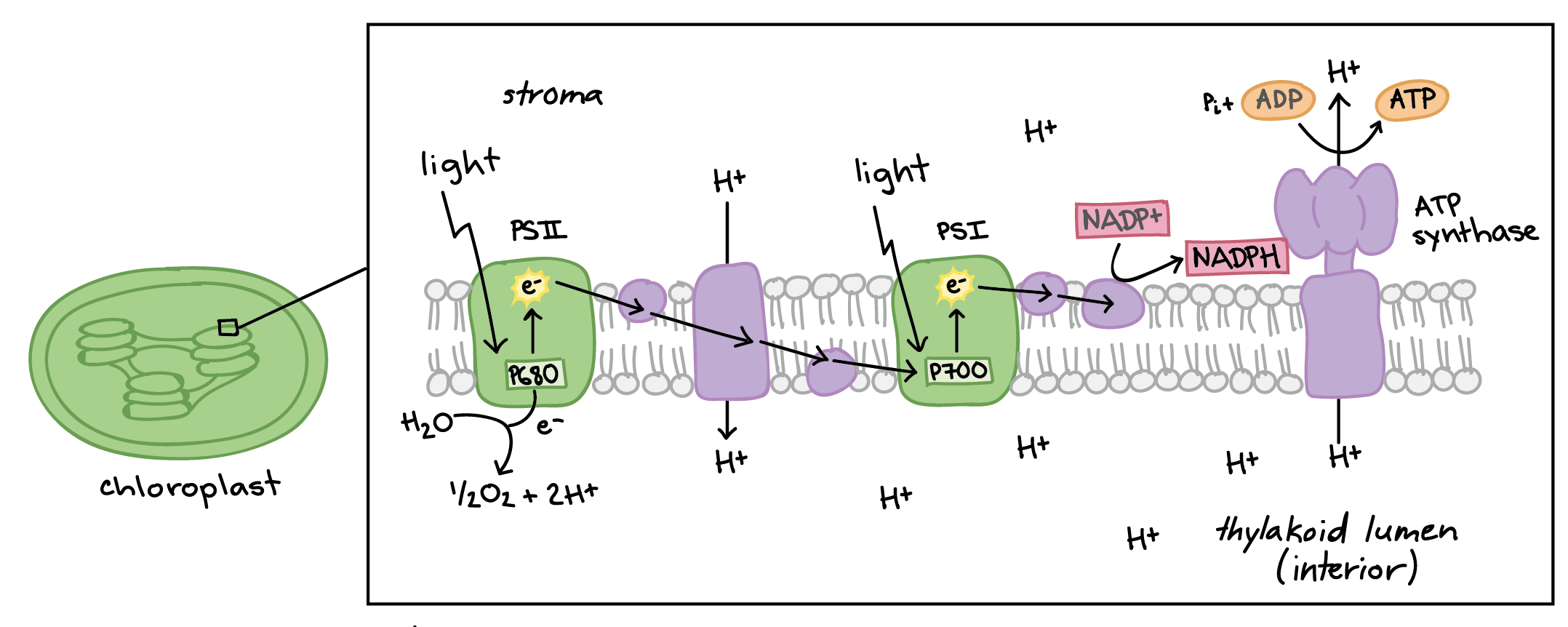
Light absorption in PSII (reation center)
Energy goes to P680 to boost an electron’s energy and that electron goes to an acceptor molecule
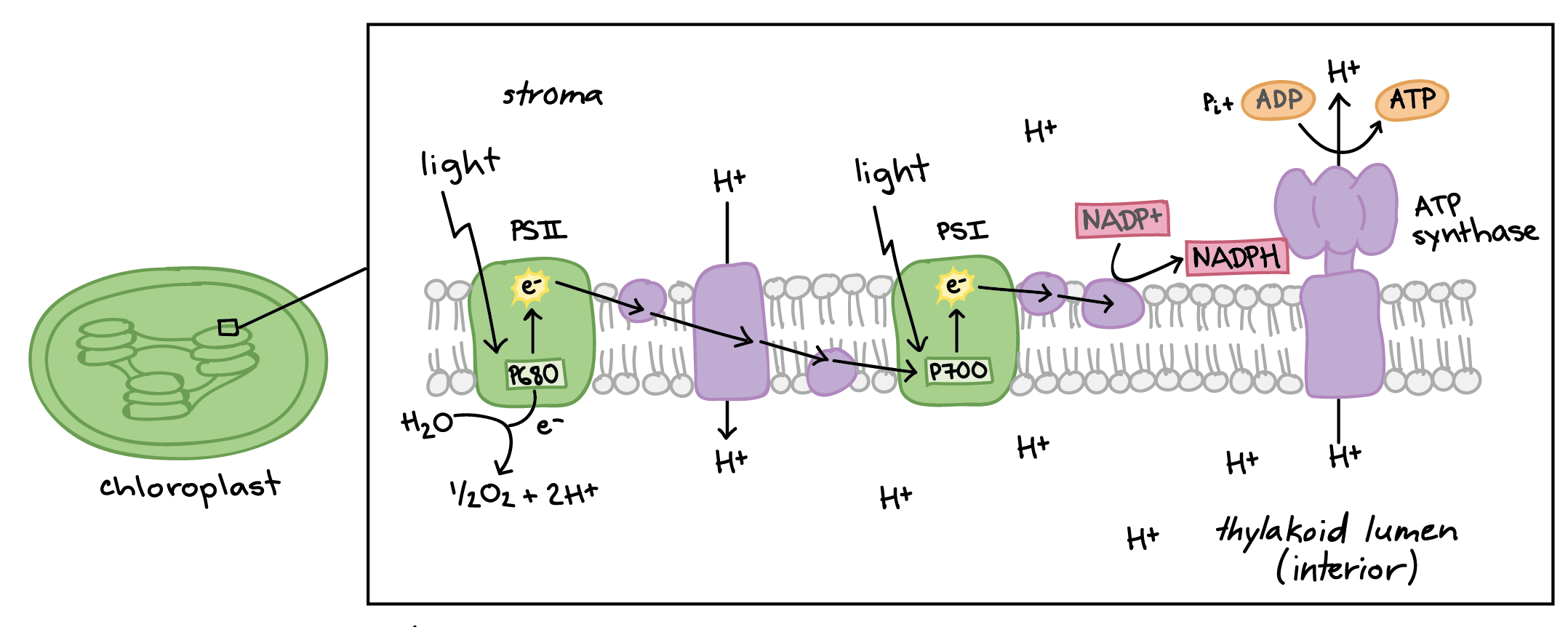
Light absorption in PSII (high energy electron)
The electron gets replaced by an electron from water after the water splits and releases O2
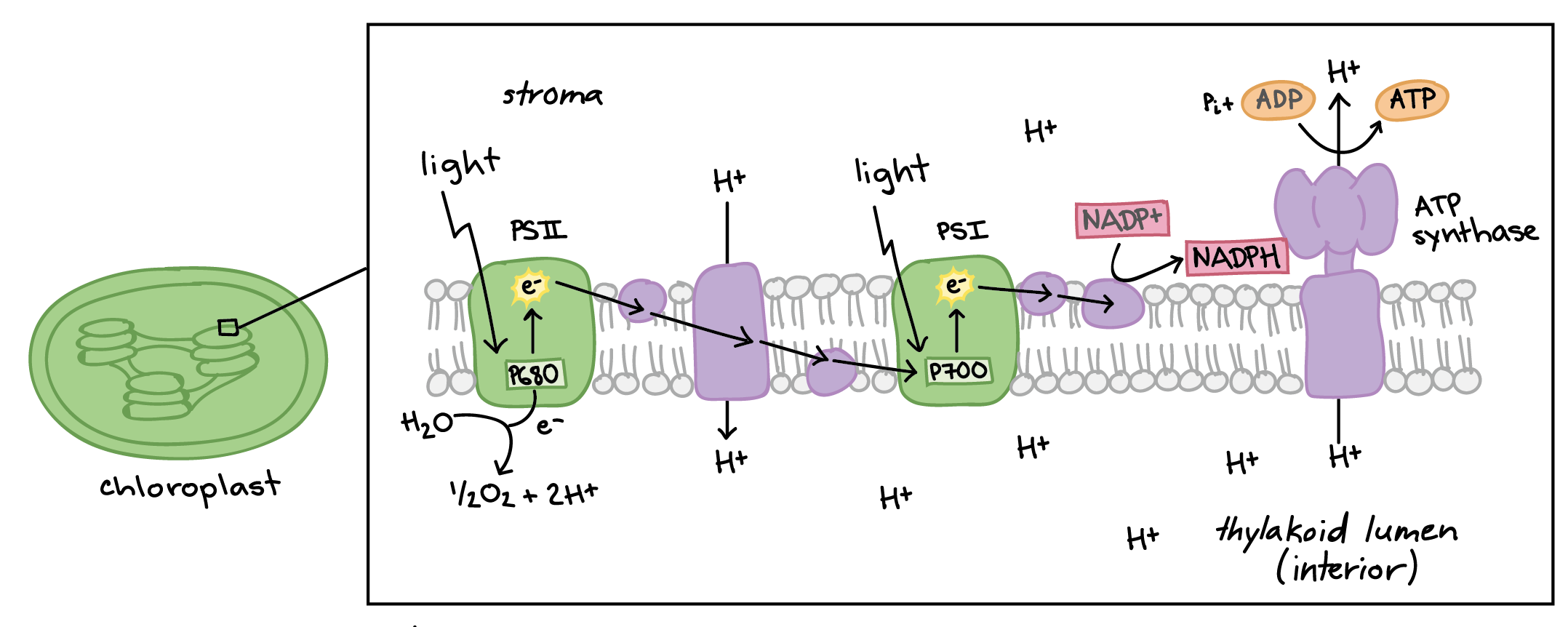
ATP synthesis
The high-energy electron travels down ETC and go thru chemiosmosis to make ATP
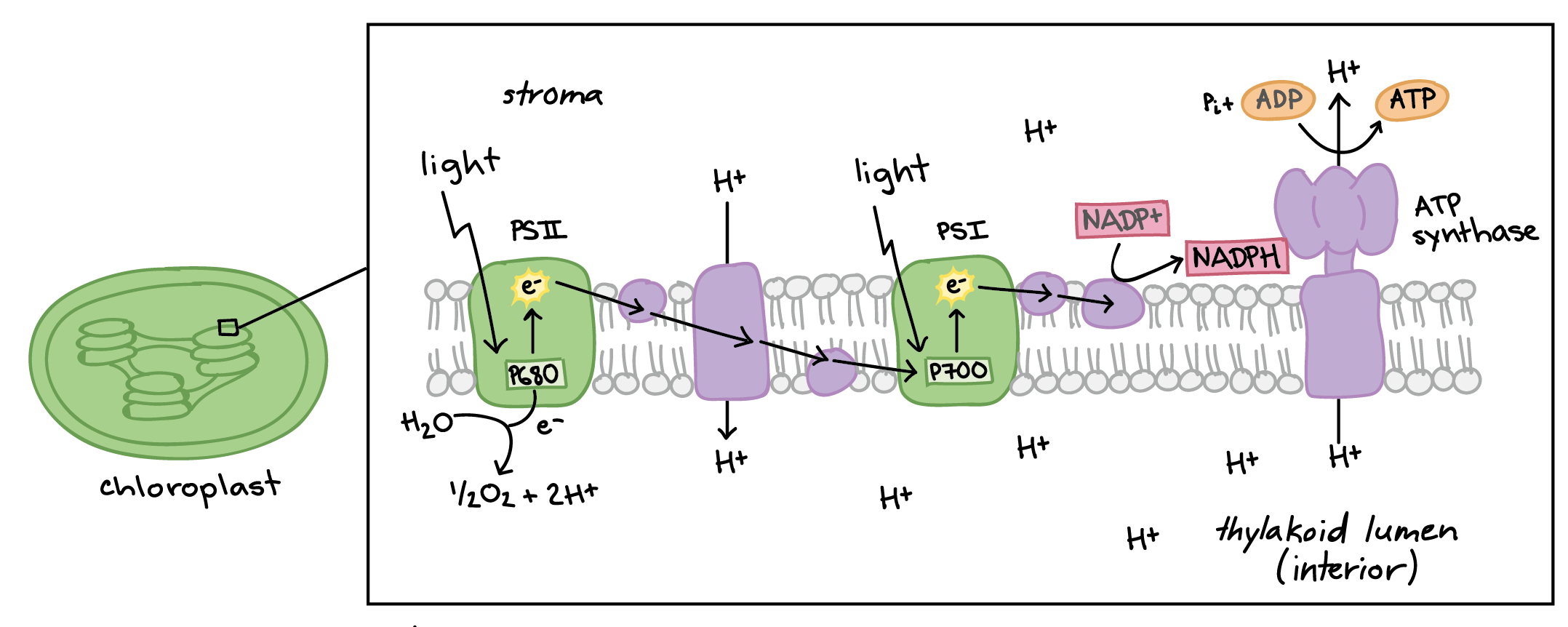
In the synthesis of ATP, H^+ ions flow down their graident into…
the stroma
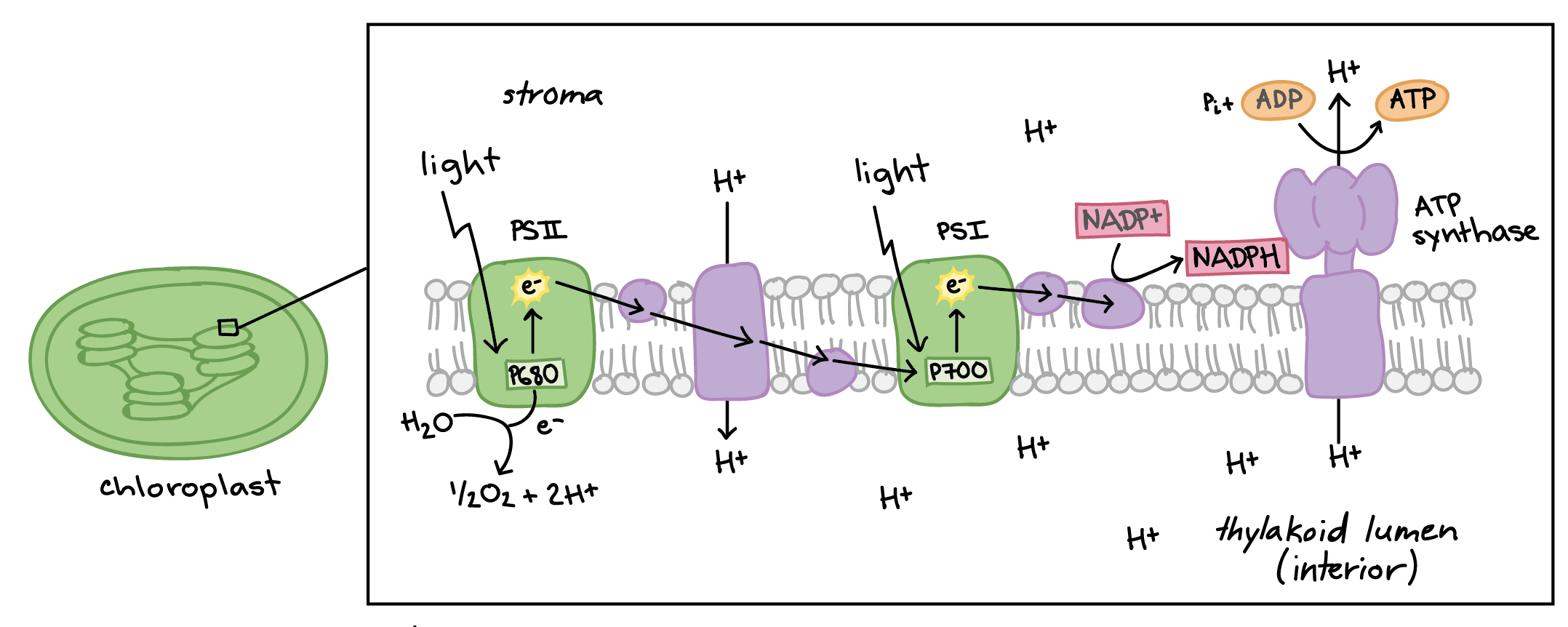
Light absorption in PSI
The elctron joins the P700 and gets its energy boosted when pigments absorb light energy
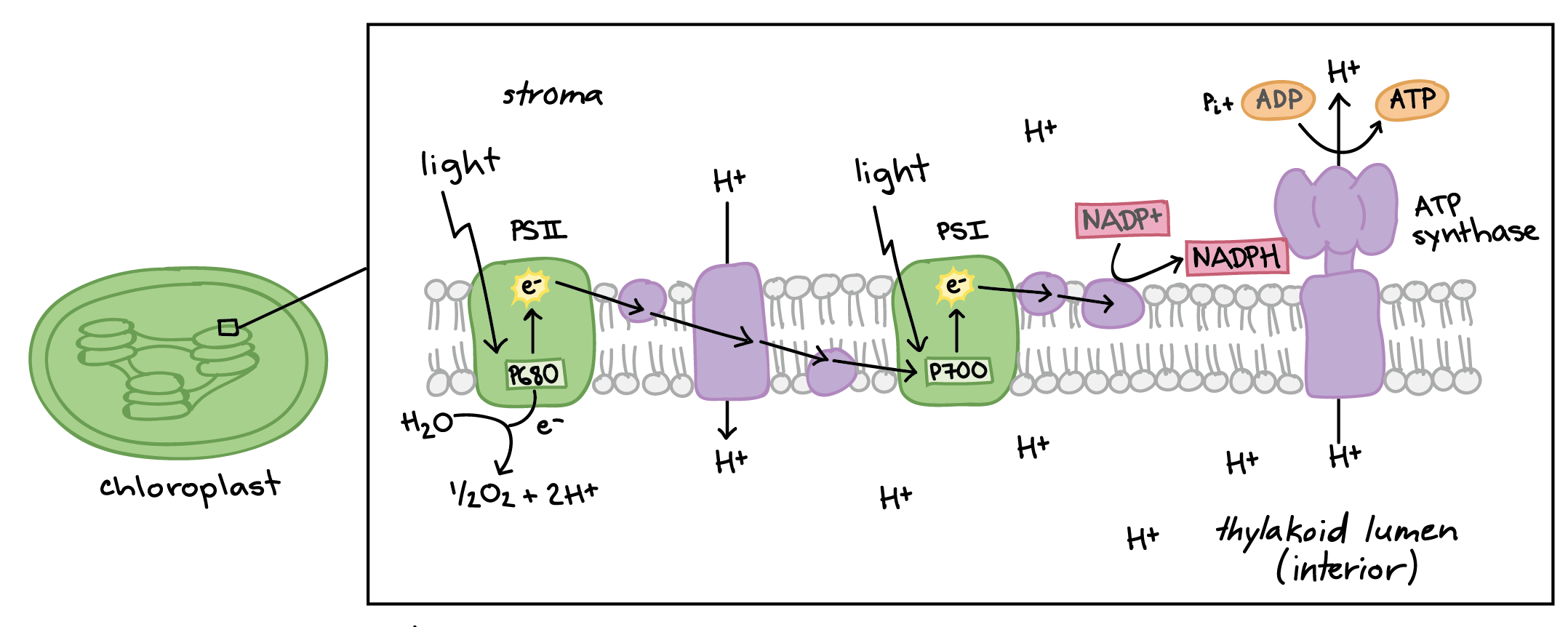
Light absorption in PSI (Electron’s transfer)
The lectron goes to an acceptor molecule and the electron gets replaced by PSII’s electron
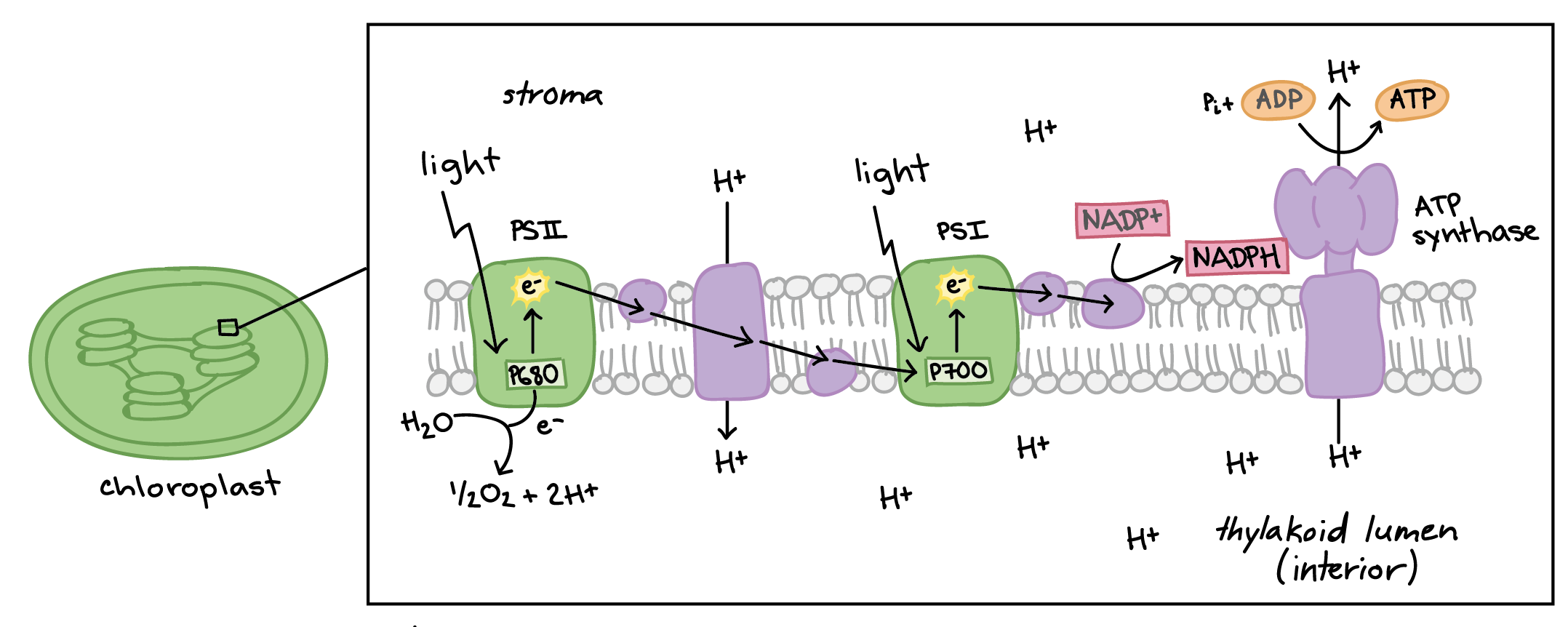
NADPH formation
The high-energy electron travels down a short second leg of the electron transport chain. At the end of the chain, the electron is passed to NADP\[^+\] (along with a second electron from the same pathway) to make NADPH.
![<p><span>The high-energy electron travels down a short second leg of the electron transport chain. At the end of the chain, the electron is passed to NADP</span><span style="font-size: inherit; font-family: inherit">\[^+\]</span><span> (along with a second electron from the same pathway) to make NADPH.</span></p>](https://knowt-user-attachments.s3.amazonaws.com/68a09d9a-cf32-4f82-a0d6-11cb96d64247.png)
How is the light dependent reaction spontaneous?
The transfer of proteins from PSII to PSI, and from PSI to NADPH, are only energetically "downhill"
Why is the transfer of protons between PSII to PSI to NADPH energetically “downhill?”
because electrons in P680 and P700 are boosted to very high energy levels by absorption of energy from light

About how many chlorophylls dooes a photosystem have?
300-400
Resonance energy transfer
When a pigment is excited by light and trransfers its energy to a nearby pigment through direct electromagnetic interactions
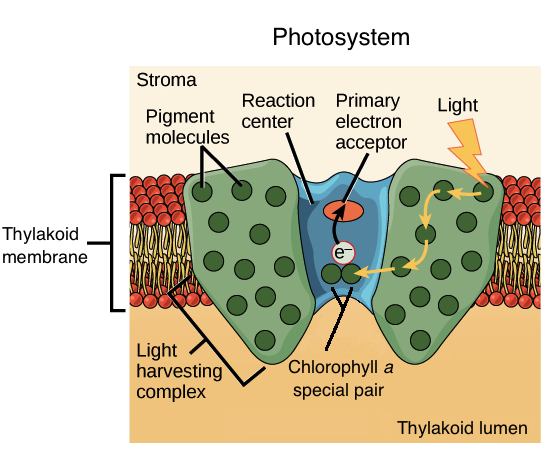
Special pair
A unique pair of chlorophyll a molecules in a photosystem
What are the primary acceptors of the photos
PSII’s is pheophytin and PSI’s is A0^7,8
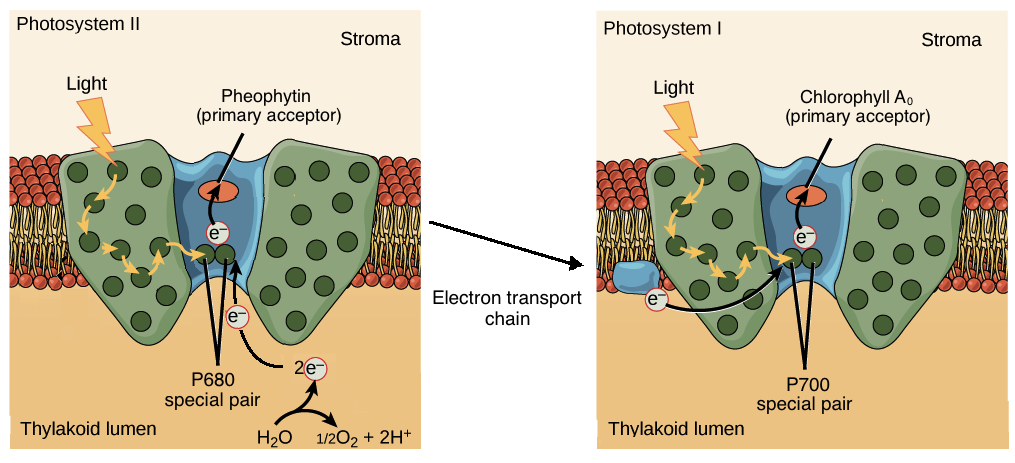
What splits the water molecule’s that transfers its electrons to PSI after it loses its energized electron
Manganese when it binds 2 at once, extracting 4 electrons, releasing 4 H+ ions, and making O2
Explain the prcoess of the electron leaving PSII and going through the ETC
it is transferred first to a small organic molecule (plastoquinone, Pq), then to a cytochrome complex (Cyt), and finally to a copper-containing protein called plastocyanin (Pc)
What happens to the electron as it moves through the ETC?
It goes from a higher to a lower energy level, releasing energy
To pump protons (H^+) from the stroma (outside of the thylakoid) into the thylakoid interior
What is some of the released energy from the ETC used for?
What does P700 do with its electron?
It sends it down a short ETC
Explain the process of PSI’s electron going down the ETC
In this series of reactions, the electron is first passed to a protein called ferredoxin (Fd), then transferred to an enzyme called NADP\[^+\]reductase.
linear phostophosphorylation
Electrons travling in a line from water through PSII and PSI to NADPH
cyclic photophosphorylation